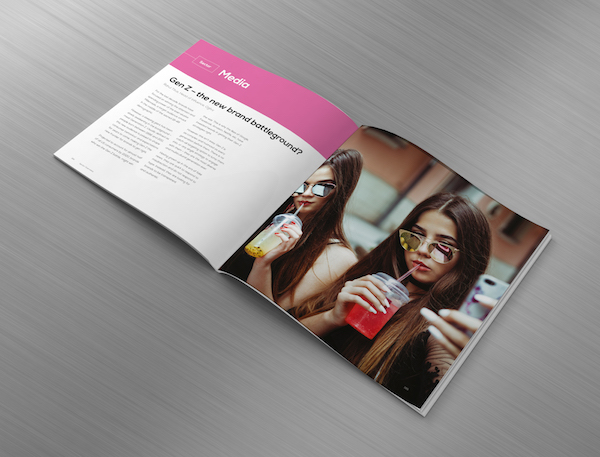
Despite the prevalence of online marketing strategies, printed marketing remains one of the most cost-effective and highest-ROI strategies for businesses. At the same time, newcomers may be intimidated by the sheer number of print marketing and advertising options that exist—and may not know where to begin.
In this article, we’ll clear up some of the main points of printed marketing to consider and how to get started.
Types of Printed Collateral.
Let’s start by exploring some of the major types of printed collateral you should consider for your marketing campaign.
Booklets. A booklet is similar to a brochure, but it usually has more pages. Booklets are bound documents that connect pages together with spiral binding, perfect binding, or another form of professional binding. They’re often used to provide lots of information and details to people, or can be used as catalogs.
Brochures. Brochures (sometimes called pamphlets) are usually single sheets of paper that have been folded in a specific way to make them almost booklet-like in function. They’re usually used as short guides or menus.
Flyers. Flyers are even simpler, taking the form of single sheets that market individual products or businesses. They can come in many sizes, sometimes resembling a poster more than a flyer.
Leaflets. The term “leaflet” is sometimes used interchangeably with “flyer,” but there are some differences. Leaflets tend to be designed with durability in mind, and have a longer lifespan than a flyer.
Calendars. You can use a calendar as a promotional item that serves an important function for your customers, keeping your brand top of mind whenever they use it.
Other promo items. Printed materials can also come in the form of other promotional items, such as stationary or sticky note pads.
How to Showcase Your Brand.
Using these printed marketing materials, you can showcase your brand in several different ways. For example:
Selling products. You can use catalogs, flyers, and other materials to show off some of your best products and services, explaining the benefits, detailing costs, and describing how to use them.
Introducing your brand. You can also use things like booklets and flyers to introduce your brand to people who have never heard of it. What should people know about your business? Where can they find you?
Making announcements. Printed materials are also great for making announcements, like releasing a new product or holding a grand opening.
Providing functionality and reminders. Sometimes, printed materials serve only to remind people that your brand exists; here, they’re typically used as promotional items, serving some functional purpose in your customer’s life.
Streamlining Your Brand Image.
If you want your printed marketing strategy to be effective, you need to ensure the consistency of your brand across all your materials. That means creating and documenting firm standards for your brand, and applying those to all your collateral.
The Importance of Quality.
It’s also vital that each piece you produce has high quality, in several areas:
Material quality. Invest in the best material you can afford. A flyer makes a much bigger impression if it’s on a heavy or glossy stock, compared to a flyer that looks like it was printed at home.
Copywriting. Headlines and bullet points are your opportunity to grab someone’s attention and make a good first impression. Your content matters.
Overall design. You also need to think about design fundamentals like fonts, colors, placement, and the effective use of white space. Work with a professional designer if you can.
Placement and Distribution.
With well-designed, well-made printed pieces in hand, your next challenge is figuring out how to place or distribute those materials. Depending on your goals, this could mean distributing brochures at your physical location, going to an event and handing out materials there, or even directly mailing materials to prospective customers in your area. There are advantages and disadvantages to each approach—just make sure you’re targeting a specific audience, no matter which route you choose.
Measuring Your ROI.
Whatever printed marketing methods you use, you should be wary of your return on investment, or ROI. Your ROI represents the amount of value you get from a given marketing strategy, compared to how much you spend on it. Your highest ROI strategies will be your most effective ones, so it’s important to favor them in the future. You can also improve your ROI by improving your quality, doing more research, and lowering your costs.
Most business owners aren’t wildly successful with their first printed marketing campaign, since they’re still familiarizing themselves with the strategy. Don’t be afraid to make mistakes; in fact, it’s good to experiment and make mistakes, as long as you learn from them. Commit to ongoing improvement in your print marketing approach, and eventually, you’ll achieve the positive ROI you want.
The post The Newbie’s Guide To Printed Marketing appeared first on Young Upstarts.
Startups
via https://aiupnow.com
admin, Khareem Sudlow

